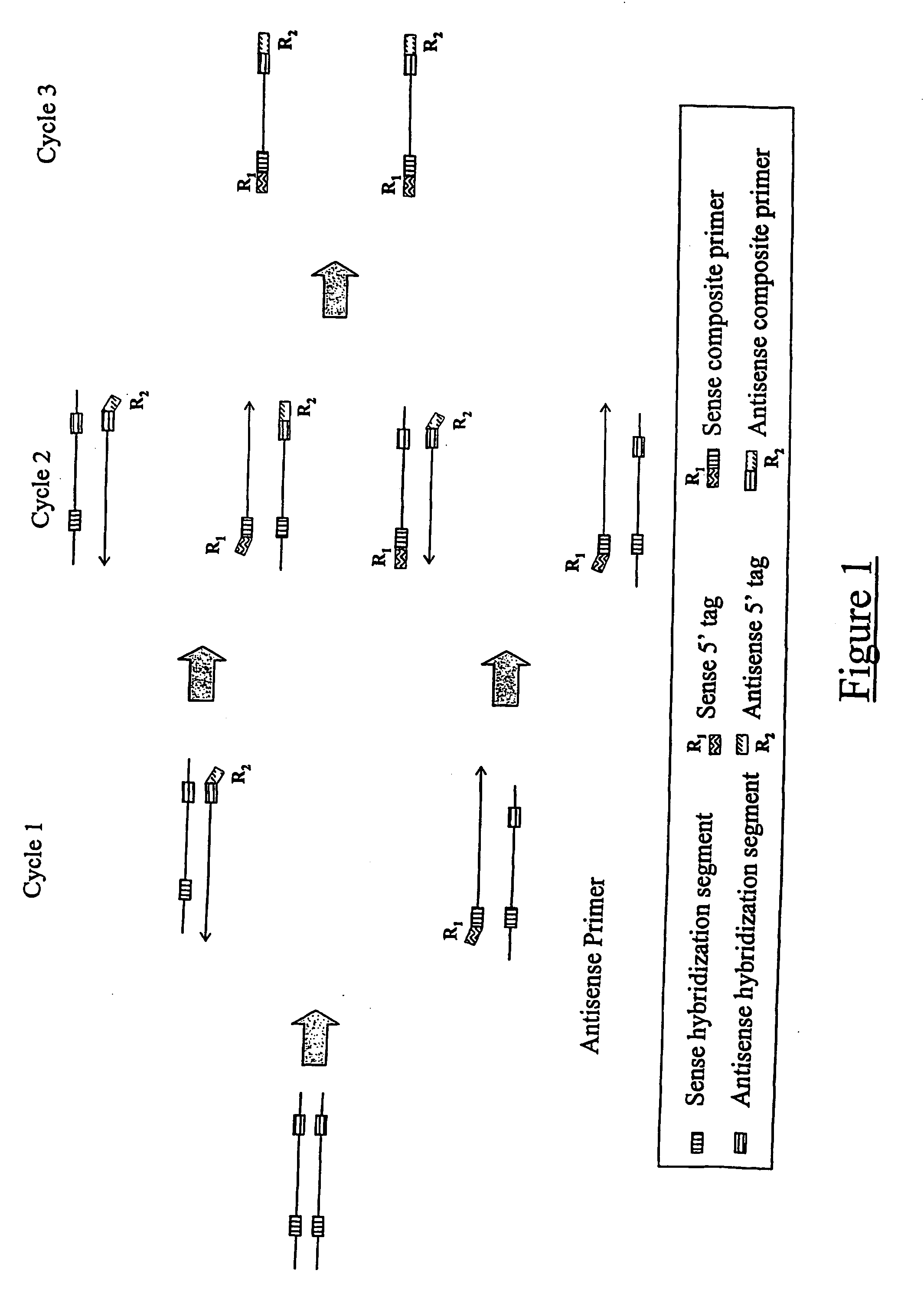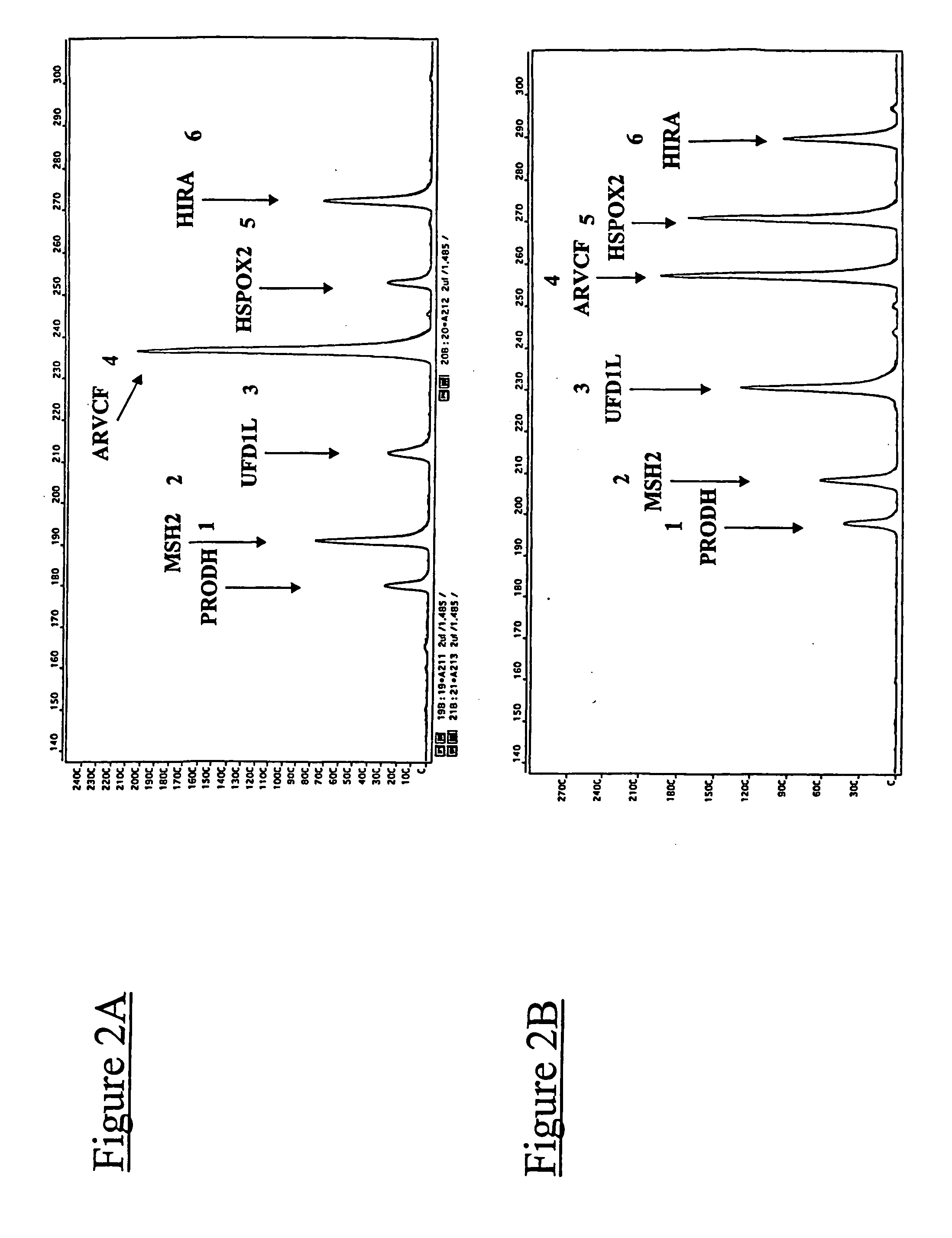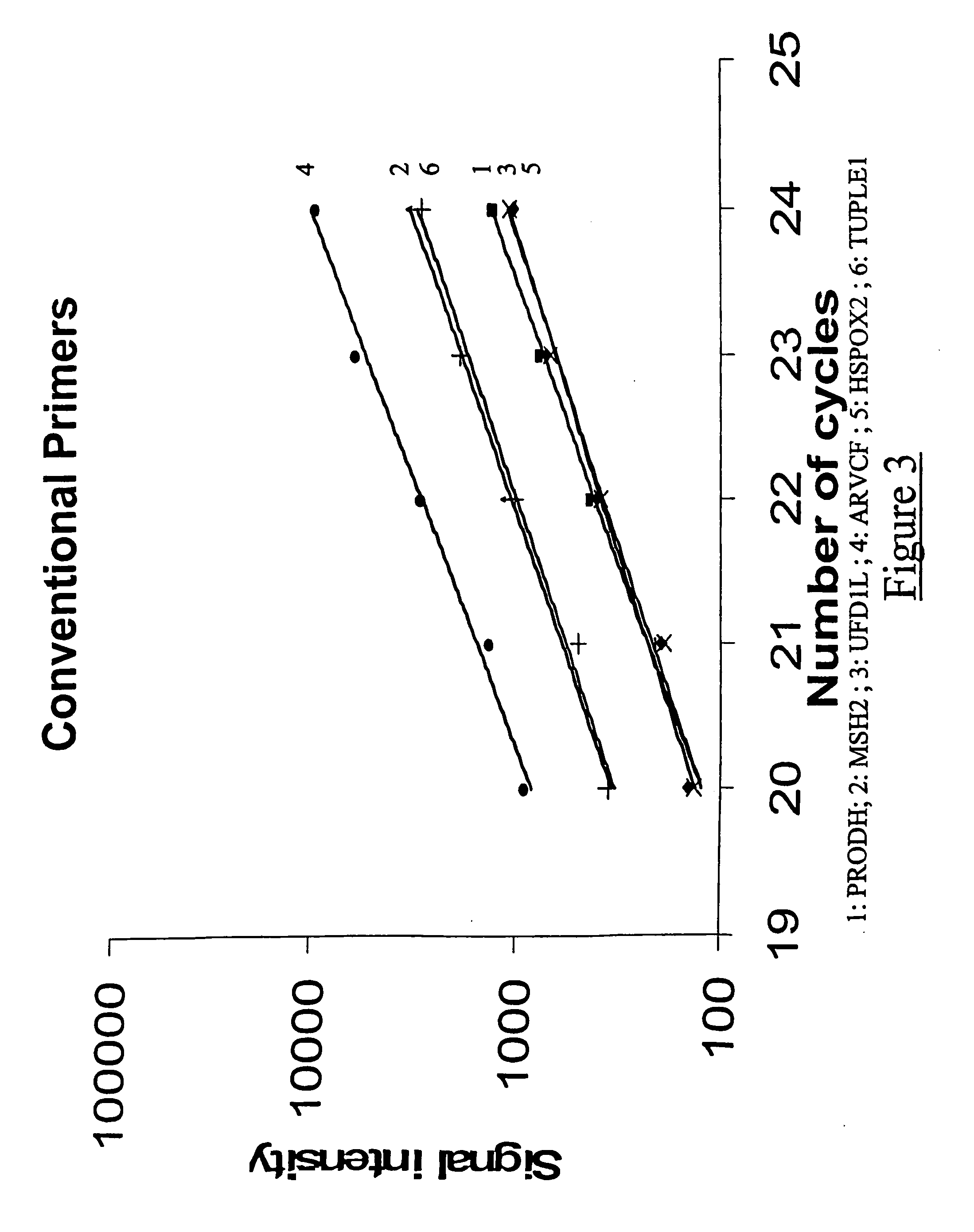Quantitative multiplex amplification on a genomic scale, and applications for detecting genomic rearrangements
a genomic scale and quantitative multiplex technology, applied in the field of quantitative multiplex amplification on a genomic scale, can solve the problems of chromosomal breakage followed by abnormal joining, primers are not suitable for exploration on the scale of an entire genome, and primers are not suitable for reliably detecting chromosomal
- Summary
- Abstract
- Description
- Claims
- Application Information
AI Technical Summary
Benefits of technology
Problems solved by technology
Method used
Image
Examples
example 1
Demonstration of the Quantitative Level of Precision Attained for the Detection of Chromosomal Rearrangements (Chromosome 22)
[0279] In order to illustrate some of the advantages of the method according to the invention compared to the methods which could previously have been carried out, fluorescent multiplex PCR experiments were carried out under comparable conditions, but varying two factors: the type of primers used (primers in accordance with the present invention, or primers corresponding to the practice of the prior art), and the presence or absence of DMSO (dimethyl sulphoxide).
[0280] By way of illustration, it was chosen, in these experiments, to target the chromosomal rearrangements of a part of the long arms of chromosome 22, which are involved in DiGeorge polymalformation syndrome.
[0281] In order to detect these chromosomal rearrangements, it was chosen to target five genes located on human chromosome 22 (PRODH, UFD1L, ARVCF, HSPOX2 and HIRA genes), and also a fragment...
example 2
Determination of the Limits of a Genomic Rearrangement, and Identification, Using the Quantitative Multiplex PCR Method According to the Invention, of a Gene Involved in a Genetic Disease
A. Materials and Methods:
[0345] 1. PCR Operating Conditions:
[0346] The PCR operating conditions used in this example correspond to those described in Example 1, namely:
[0347] The 25 μL reaction volume of the PCR used in this example is made up in the following way: [0348] 75 mM Tris HCl, pH 8.8 [0349] 20 mM (NH4)2SO4 [0350] 0.01% Tween® 20 [0351] 1.5 mM MgCl2 [0352] 200 μM dNTPs (deoxyribonucleoside triphosphates) for the PCRs carried out in the presence of DMSO, DMSO is added at a final concentration of 10% all the primers are present at the same concentration of 0.3 μM.
[0353] Taq polymerase (marketed under the name “Thermoprime Plus DNA Polymerase”, ABgene®) is used in this example at a dose of 1.2 units per tube. A unit of this enzyme is defined as the amount which incorporates into a PCR p...
PUM
| Property | Measurement | Unit |
|---|---|---|
| melting temperature Tm | aaaaa | aaaaa |
| melting temperature Tm | aaaaa | aaaaa |
| melting temperature Tm | aaaaa | aaaaa |
Abstract
Description
Claims
Application Information
 Login to View More
Login to View More - R&D
- Intellectual Property
- Life Sciences
- Materials
- Tech Scout
- Unparalleled Data Quality
- Higher Quality Content
- 60% Fewer Hallucinations
Browse by: Latest US Patents, China's latest patents, Technical Efficacy Thesaurus, Application Domain, Technology Topic, Popular Technical Reports.
© 2025 PatSnap. All rights reserved.Legal|Privacy policy|Modern Slavery Act Transparency Statement|Sitemap|About US| Contact US: help@patsnap.com



